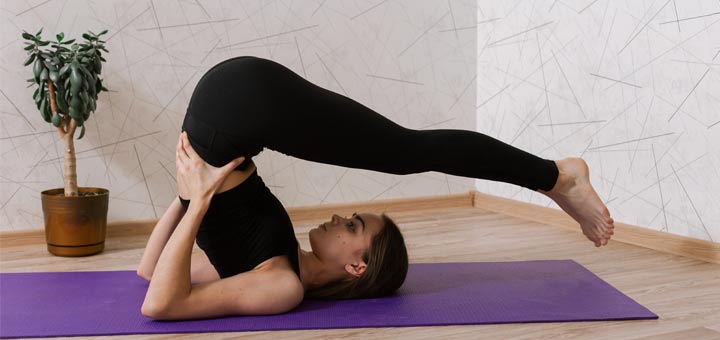The thyroid is a small gland in the throat that secretes hormones, which influence body temperature, growth, and metabolism. These hormones can also affect brain development in children. A problem with the thyroid can take a toll on your life, affecting both physical and mental health. Fortunately, there are natural remedies and yoga poses that can help balance the thyroid.
There have been several studies that document how yoga positively affects the thyroid. Now, yoga poses alone will not cure a thyroid disorder; rather, yoga is merely a complementary therapy. If you take thyroid medication or take part in thyroid therapies, yoga is not meant to replace them. Most of the yoga poses in this article help to stimulate the throat by increasing energy flow and improving circulation to that area.
Note: Don’t go beyond your body’s limitations. It’s important to be gentle on the body with these poses, so please modify the stretches to your level of comfort. Additionally, you don’t have to complete all of these poses in the same yoga session. Break them up throughout the day and see how you feel.
Bridge Pose

This pose is great for anyone with hypothyroidism because it works to stretch the neck and improve circulation to the thyroid gland. Lie on your back and draw your feet towards your buttocks as you bend your knees. You should be able to touch your heels with your finger tips. With your arms by your sides, press them into the floor as you lift your hips upward. Tuck your chin and squeeze your glutes. Breathe deeply for three slow breaths. Return to the starting position.
Plow Pose

The theory is that this pose benefits your thyroid by improving circulation. The slight inversion works to increase blood flow to the thyroid and other glands in the upper body. Lie flat on your back and keep your arms by your sides, palms facing down. Inhale deeply and then exhale as you bring your legs over your head, supporting your lower back with your hands. Hold your hands on your hips with your elbows on the ground like bolsters. If you can, touch your toes to the ground and remain here for three to five breaths. Exhale and return to the starting position.
Upward Bow Pose

This pose can be a little advanced for beginners, so feel free to skip it if it is not feasible. This pose provides a deep stretch to the chest and lungs, and it also stimulates the pituitary and thyroid glands. Lie flat on your back and bend your knees to draw your heels close to your buttocks. Place your hands on the mat on either side of your head, press them and your feet into the mat firmly, and squeeze your glutes as you lift your hips upward. Your body should make an arch. Spread your shoulder blades and hang your head. Hold the pose for five to ten breaths before returning to the starting position.
Cobra Pose

Working to stretch the neck and throat region, cobra pose can help people who suffer from hypothyroidism. The elongated stretch works to improve thyroid function. Lie flat on your stomach and place your palms on the mat on either side of your chest. The tops of your feet should also be on the mat. Squeeze your elbows in as you press your palms into the mat and push up. You can come partway up into cobra or all the way up into upward dog (pictured above). Drop your shoulders and relax your breathing for five breaths. Gently lower yourself down to return to the starting position.
Inverted Pose

Commonly known as Legs Up The Wall, this pose works to increase blood flow to the thyroid gland to help regulate thyroid function. Additionally, this pose is beneficial for stress or anxiety relief. Place a blanket or pillow under your hips for support. Sit up straight with your right side against the wall. Lift your legs up the wall in a swooping motion as you simultaneously lie on your back. Your buttocks can touch the wall or be a few inches away from it. Relax the neck to your chin and soften the throat. Remain in this position for 20 minutes, breathing deeply throughout.
Corpse Pose

Even though this pose isn’t difficult, it is challenging to lie in stillness for an elongated period. Rest in this pose because your body is fully supported without effort. Lie flat on your back with your palms facing up and allow your feet fall out to the sides. Release any tension that you have in the body and let go of everything. Relax in this pose for any amount of time that feels comfortable to you. You can remain here for two minutes or 25 minutes.

Vincent Stevens is the senior content writer at Dherbs. As a fitness and health and wellness enthusiast, he enjoys covering a variety of topics, including the latest health, fitness, beauty, and lifestyle trends. His goal is to inform people of different ways they can improve their overall health, which aligns with Dherbs’ core values. He received his bachelor’s degree in creative writing from the University of Redlands, graduating summa cum laude. He lives in Los Angeles, CA.





















